Abstract
The activity of cefmenoxime (SCE-1365), 7 beta-[2-(2-aminothiazol-4-yl)-(Z)-2-methoxyiminoacetamido]-3-[(1-methyl-1H-tetrazol-5-yl)thiomethyl]ceph-3-em-4-carboxylic acid, was compared with that of other cephalosporins. Cefmenoxime exhibited high activity against a wide variety of gram-positive and gram-negative bacteria. The in vitro activity of cefmenoxime against Streptococcus pyogenes, Haemophilus influenzae, and Enterobacteriaceae, including indole-positive Proteus, Serratia marcescens, Enterobacter cloacae, and Citrobacter freundii, was 10 to 1,000 times greater than that of several other cephalosporins. Against Pseudomonas aeruginosa, cefmenoxime showed activity two to four times that of sulbenicillin and carbenicillin but less than that of cefsulodin. Variation in pH, addition of horse serum, and type of growth medium had definite effects on the activity of cefmenoxime, and the inoculum size affected the activity against bacterial species. In Escherichia coli cefmenoxime showed marked affinity for penicillin-binding protein 3 (PBP-3), followed by PBP-1 (1A and 1B). This affinity profile was well correlated with its filamentous cell-forming activity under extremely low drug concentrations and with its bactericidal activity against microorganisms. The high in vitro activity of cefmenoxime was reflected in the degree of protection observed in mice infected intraperitoneally with a wide variety of gram-positive and gram-negative bacteria. Furthermore, cefmenoxime showed good therapeutic activity against infection models in mice such as respiratory tract infection caused by Klebsiella pneumoniae and urinary tract infection caused by Proteus mirabilis.
Full text
PDF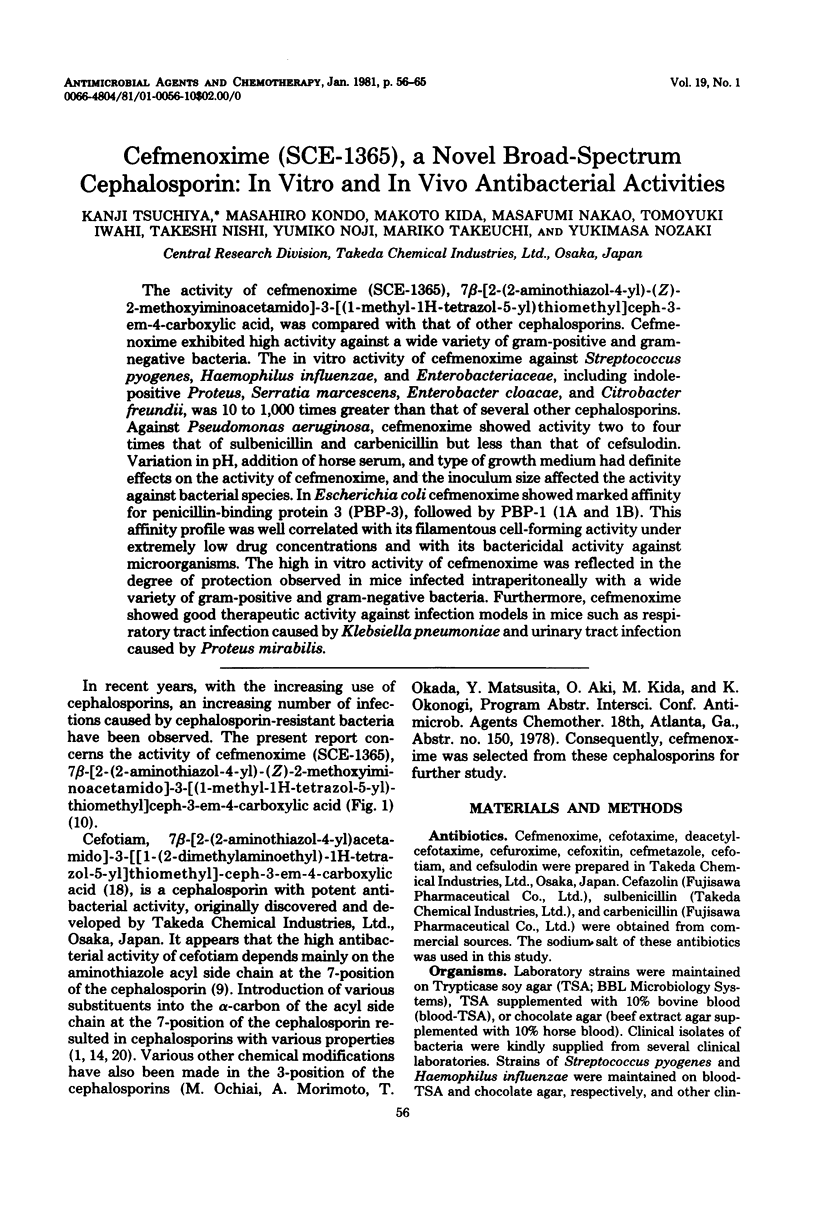
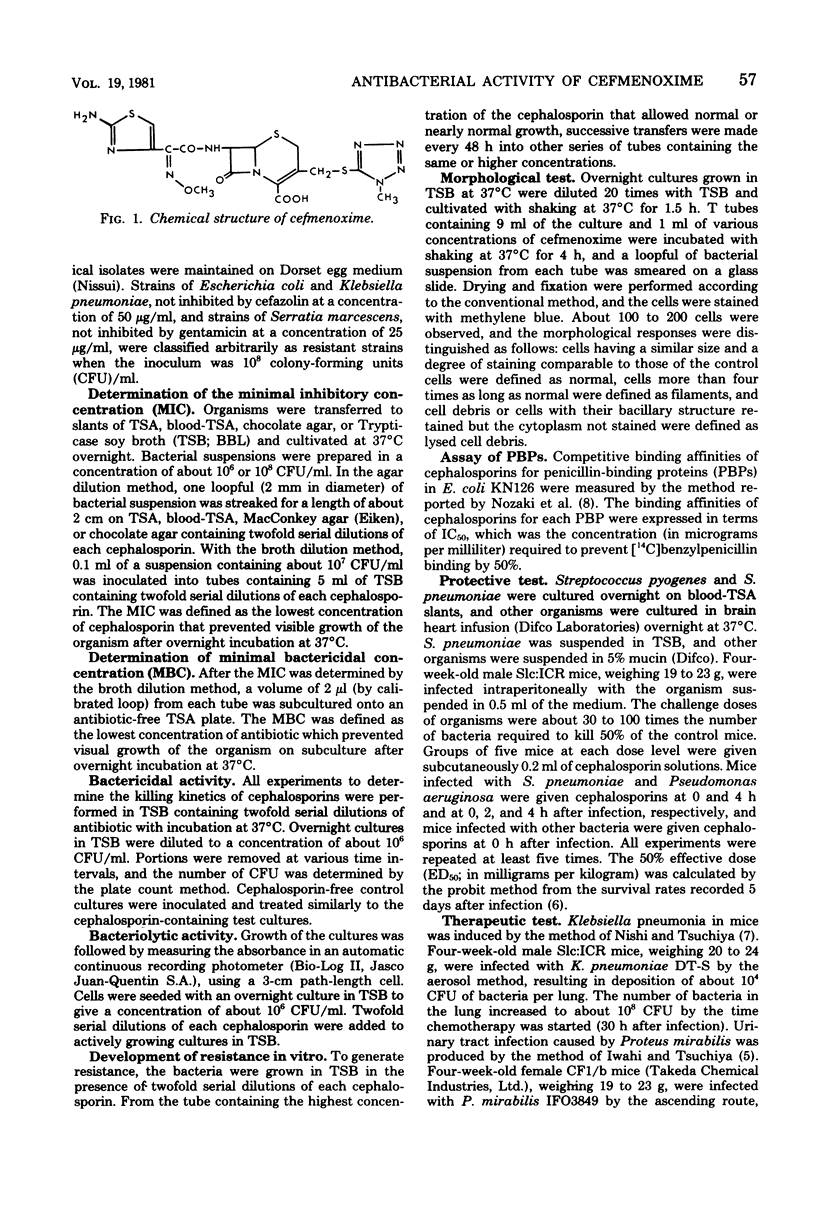
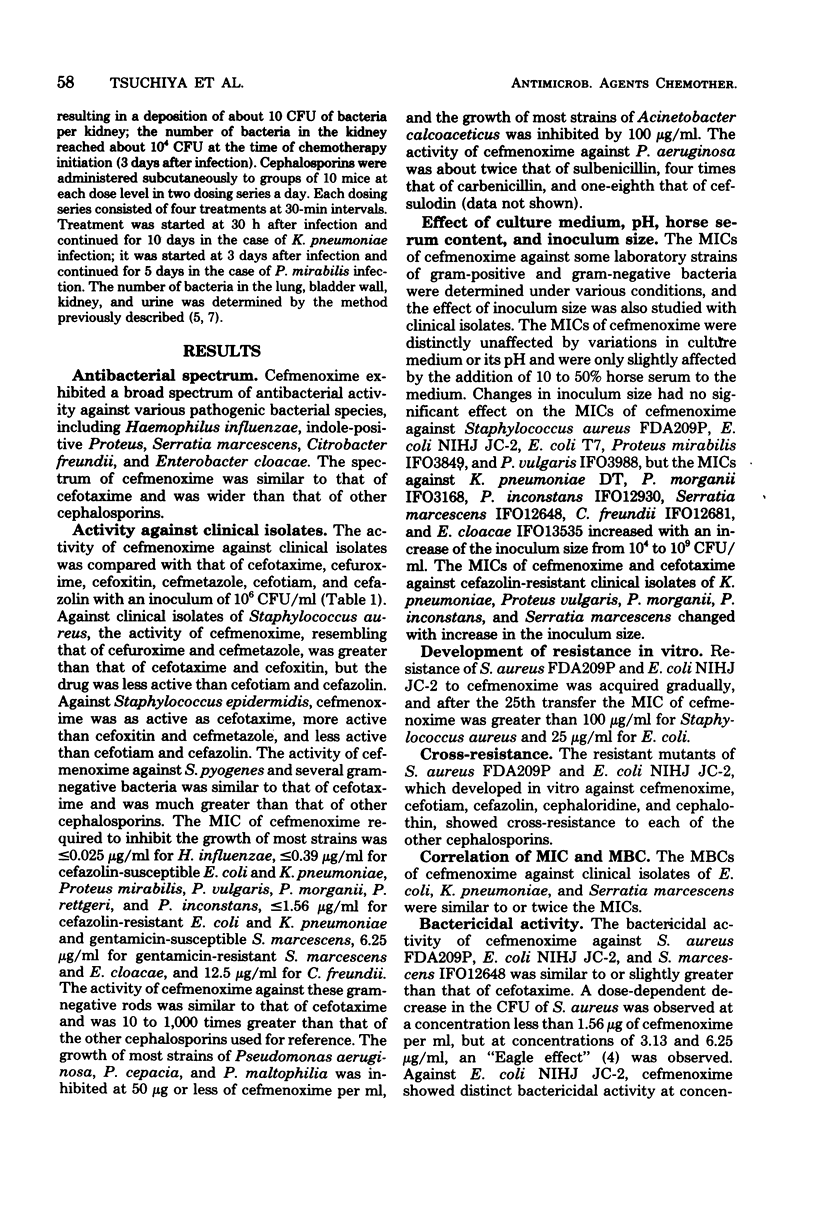
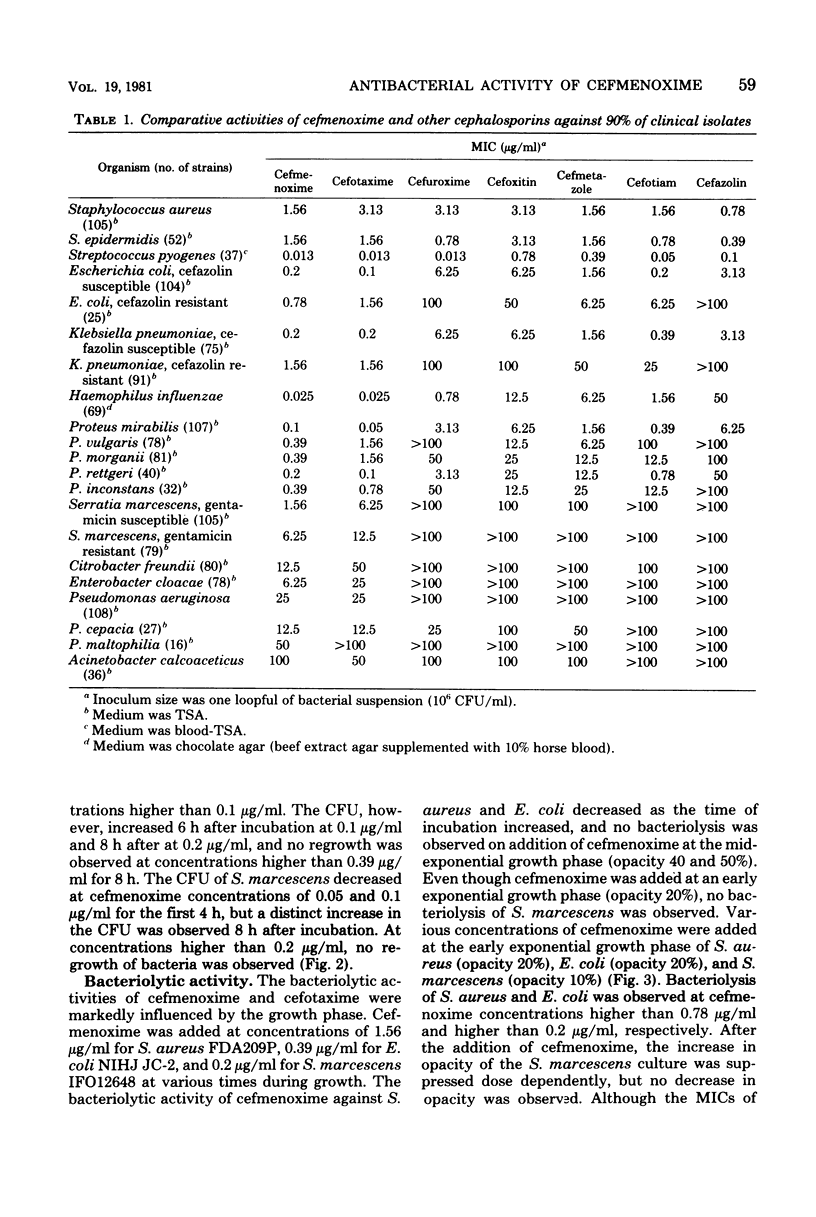
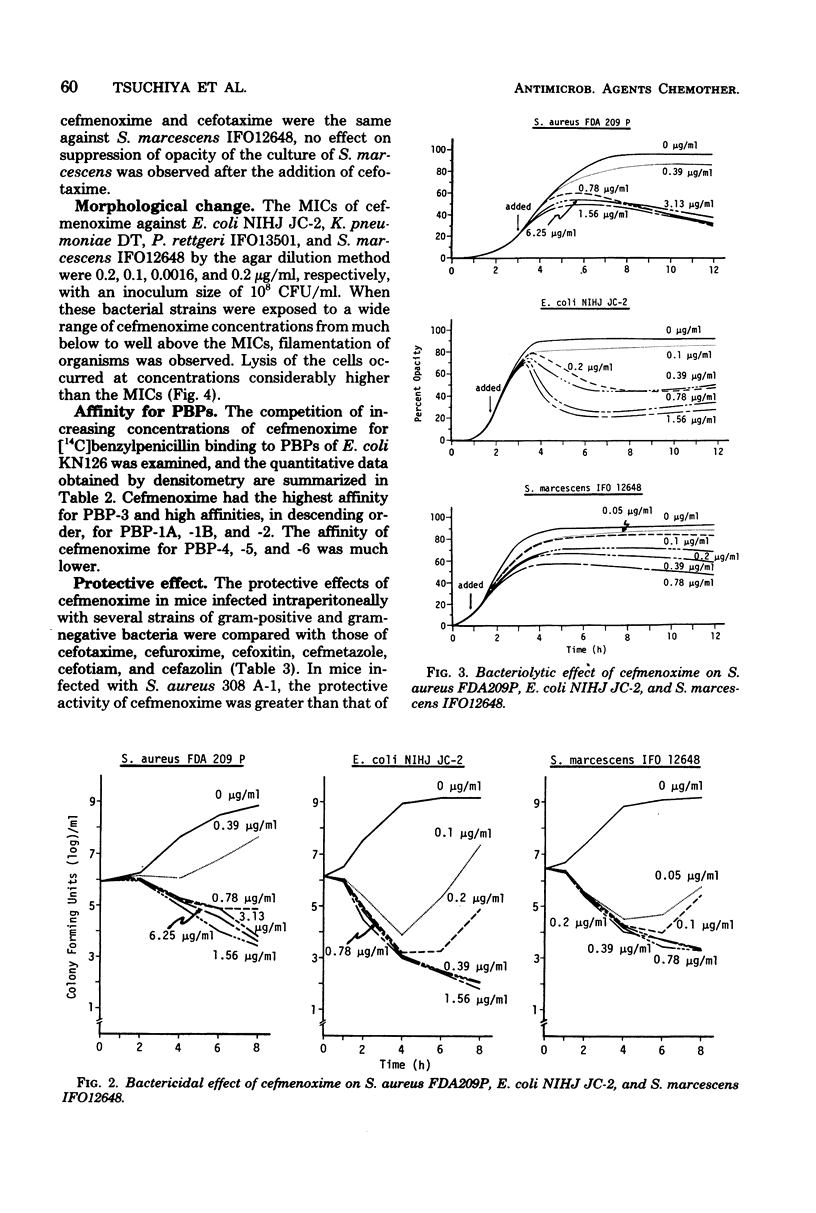
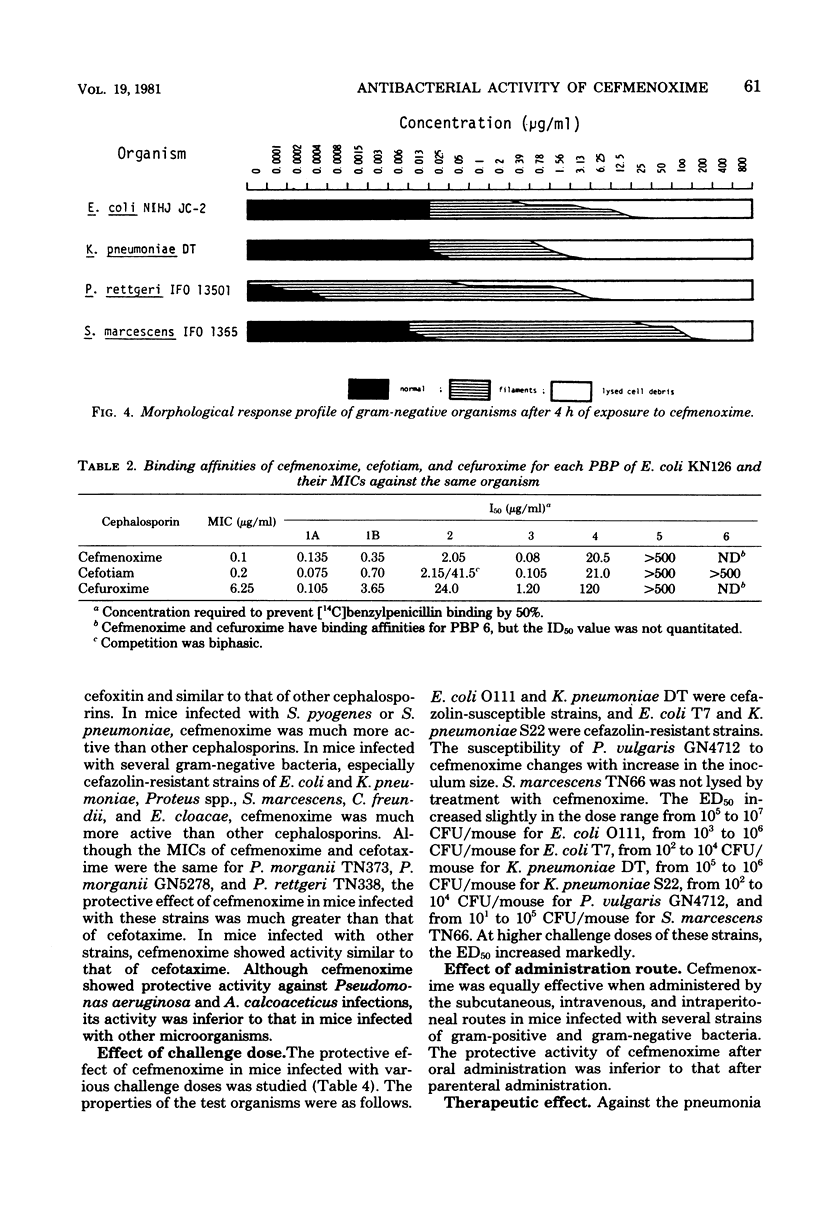
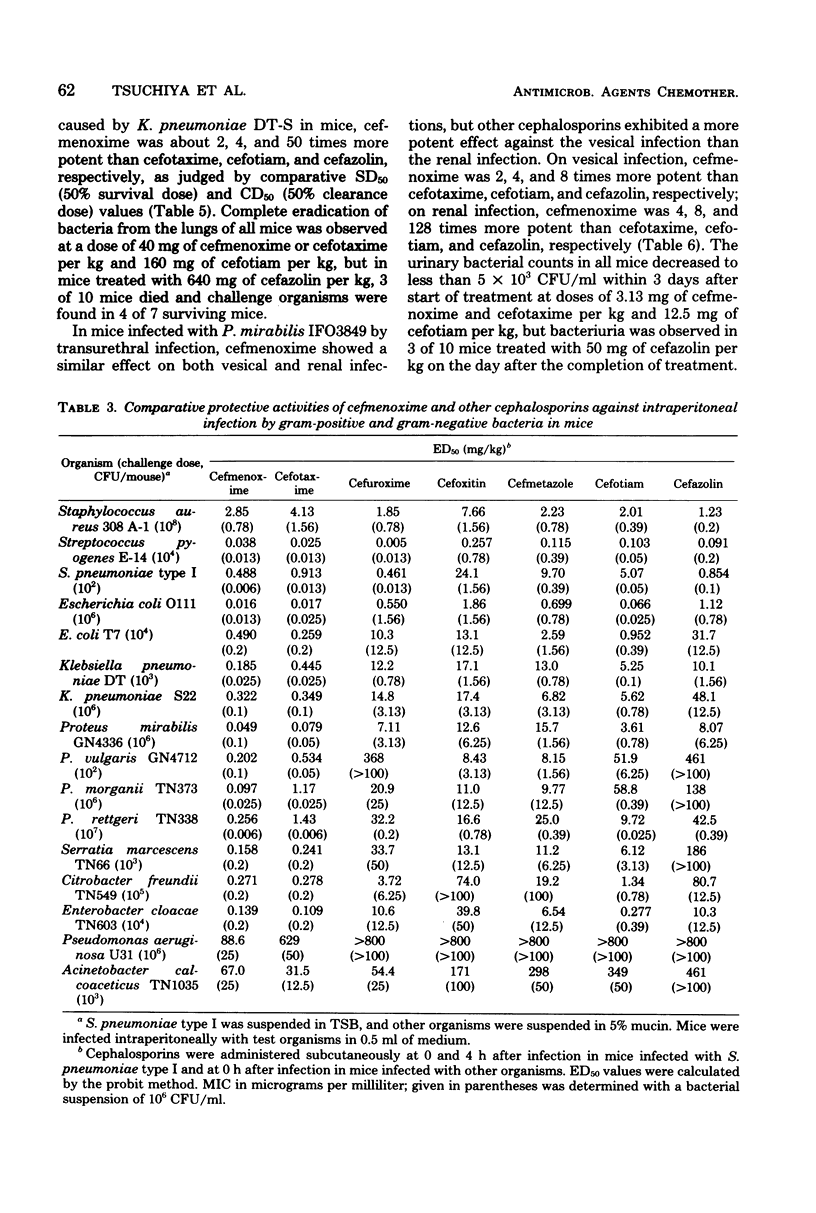
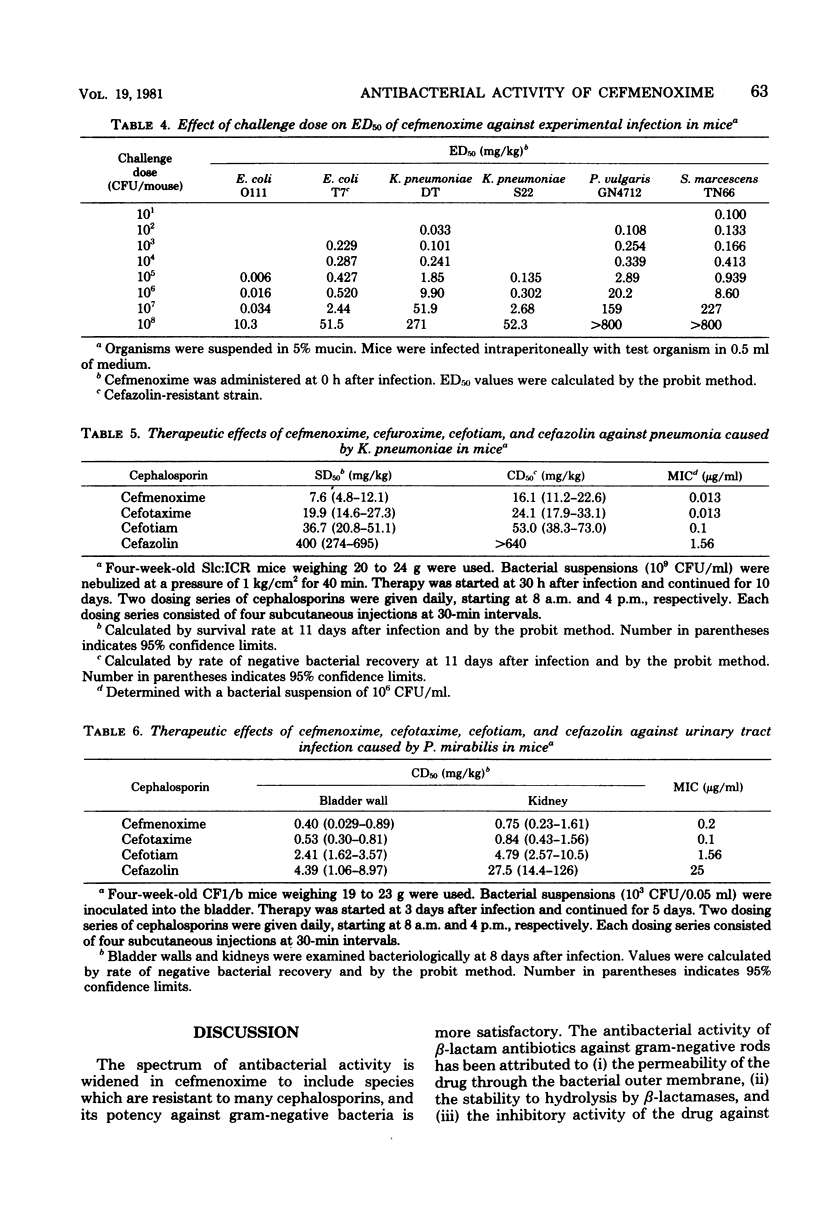
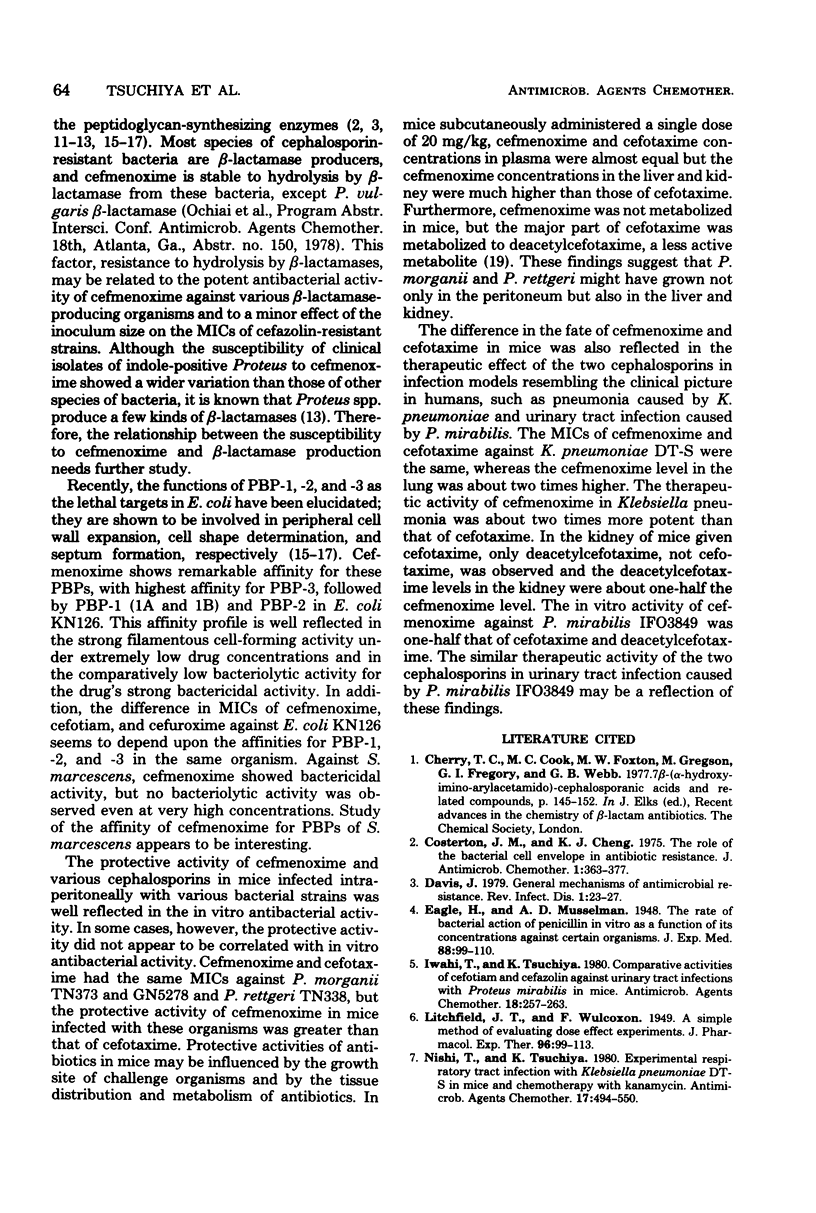
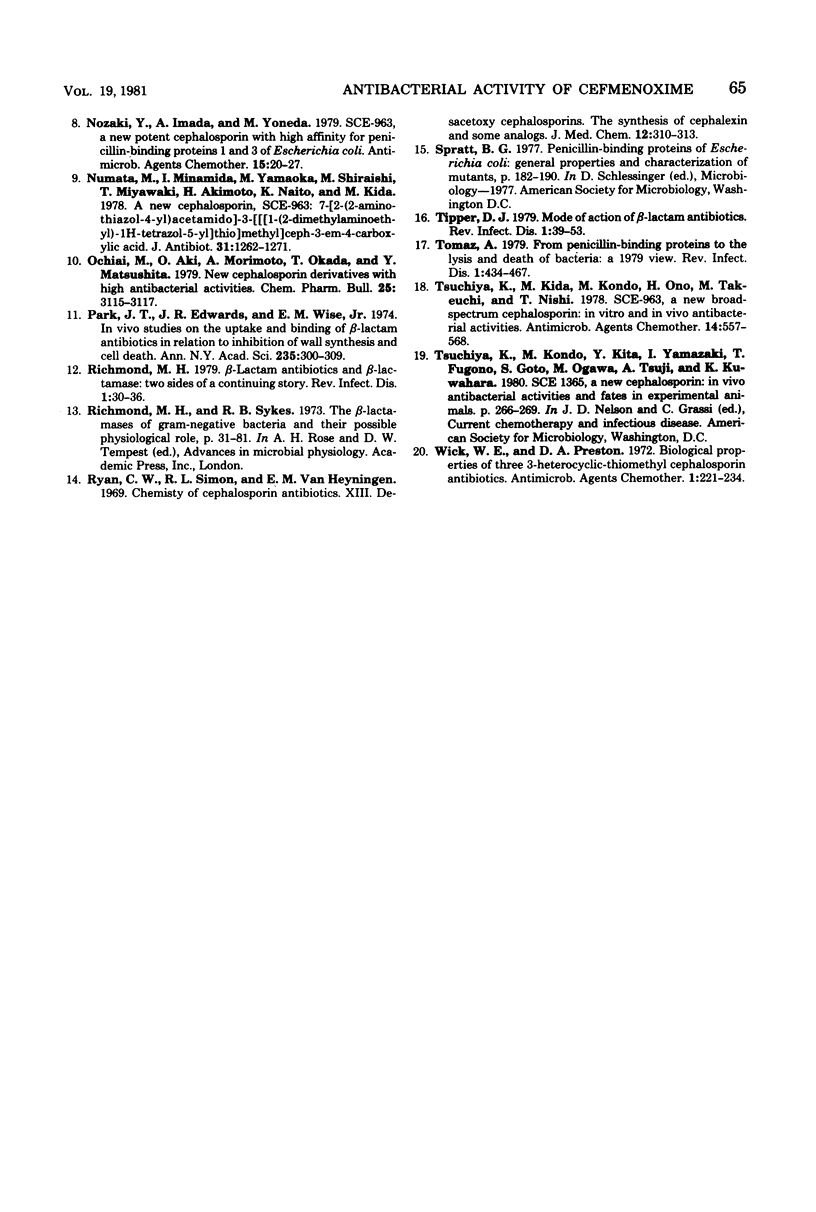
Images in this article
Selected References
These references are in PubMed. This may not be the complete list of references from this article.
- Costerton J. W., Cheng K. J. The role of the bacterial cell envelope in antibiotic resistance. J Antimicrob Chemother. 1975 Dec;1(4):363–377. doi: 10.1093/jac/1.4.363. [DOI] [PubMed] [Google Scholar]
- Davies J. General mechanisms of antimicrobial resistance. Rev Infect Dis. 1979 Jan-Feb;1(1):23–29. doi: 10.1093/clinids/1.1.23. [DOI] [PubMed] [Google Scholar]
- Iwahi T., Tsuchiya K. Comparative activities of cefotiam and cefazolin against urinary tract infections with Proteus mirabilis in mice. Antimicrob Agents Chemother. 1980 Aug;18(2):257–263. doi: 10.1128/aac.18.2.257. [DOI] [PMC free article] [PubMed] [Google Scholar]
- Nishi T., Tsuchiya K. Experimental respiratory tract infection with Klebsiella pneumoniae DT-S in mice: chemotherapy with kanamycin. Antimicrob Agents Chemother. 1980 Mar;17(3):494–505. doi: 10.1128/aac.17.3.494. [DOI] [PMC free article] [PubMed] [Google Scholar]
- Nozaki Y., Imada A., Yoneda M. SCE-963, a new potent cephalosporin with high affinity for penicillin-binding proteins 1 and 3 of Escherichia coli. Antimicrob Agents Chemother. 1979 Jan;15(1):20–27. doi: 10.1128/aac.15.1.20. [DOI] [PMC free article] [PubMed] [Google Scholar]
- Numata M., Minamida I., Yamaoka M., Shiraishi M., Miyawaki T., Akimoto H., Naito K., Kida M. A new cephalosporin. SCE-963: 7-[2-(2-aminothiazol-4-yl)-acetamido]-3-[[[1-(2-dimethylaminoethyl)-1h-tetrazol-5-yl]-thio]methyl]ceph-3-em-4-carboxylic acid. Chemistry and structure-activity relationships. J Antibiot (Tokyo) 1978 Dec;31(12):1262–1271. doi: 10.7164/antibiotics.31.1262. [DOI] [PubMed] [Google Scholar]
- Ochiai M., Aki O., Morimoto A., Okada T., Matsushita Y. New cephalosporin derivatives with high antibacterial activities. Chem Pharm Bull (Tokyo) 1977 Nov;25(11):3115–3117. doi: 10.1248/cpb.25.3115. [DOI] [PubMed] [Google Scholar]
- Park J. T., Edwards J. R., Wise E. M., Jr In vivo studies on the uptake and binding of beta-lactam antibiotics in relation to inhibition of wall synthesis and cell death. Ann N Y Acad Sci. 1974 May 10;235(0):300–309. doi: 10.1111/j.1749-6632.1974.tb43273.x. [DOI] [PubMed] [Google Scholar]
- Ryan C. W., Simon R. L., Van Heyningen E. M. Chemistry of cephalosporin antibiotics. 13. Desacetoxycephalosporins. The synthesis of cephalexin and some analogs. J Med Chem. 1969 Mar;12(2):310–313. doi: 10.1021/jm00302a026. [DOI] [PubMed] [Google Scholar]
- Tipper D. J. Mode of action of beta-lactam antibiotics. Rev Infect Dis. 1979 Jan-Feb;1(1):39–54. doi: 10.1093/clinids/1.1.39. [DOI] [PubMed] [Google Scholar]
- Tomasz A. From penicillin-binding proteins to the lysis and death of bacteria: a 1979 view. Rev Infect Dis. 1979 May-Jun;1(3):434–467. doi: 10.1093/clinids/1.3.434. [DOI] [PubMed] [Google Scholar]
- Tsuchiya K., Kida M., Kondo M., Ono H., Takeuchi M., Nishi T. SCE-963, a new broad-spectrum cephalosporin: in vitro and in vivo antibacterial activities. Antimicrob Agents Chemother. 1978 Oct;14(4):557–568. doi: 10.1128/aac.14.4.557. [DOI] [PMC free article] [PubMed] [Google Scholar]
- Wick W. E., Preston D. A. Biological properties of three 3-heterocyclic-thiomethyl cephalosporin antibiotics. Antimicrob Agents Chemother. 1972 Mar;1(3):221–234. doi: 10.1128/aac.1.3.221. [DOI] [PMC free article] [PubMed] [Google Scholar]



